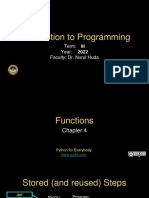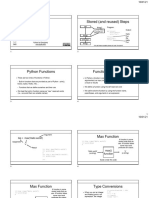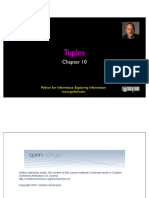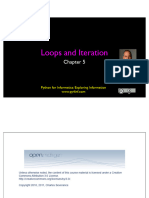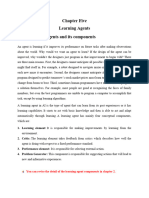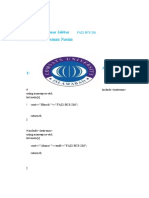0% found this document useful (0 votes)
36 views23 pagesPy4Inf 04 Functions
The document discusses Python functions including defining functions, calling functions, arguments, parameters, return values, and type conversions. Functions are reusable blocks of code that take inputs and produce outputs. Functions are defined using the def keyword and called by their name. Arguments are values passed into a function and parameters refer to the variables in the function definition.
Uploaded by
junedijoasliCopyright
© © All Rights Reserved
We take content rights seriously. If you suspect this is your content, claim it here.
Available Formats
Download as PDF, TXT or read online on Scribd
0% found this document useful (0 votes)
36 views23 pagesPy4Inf 04 Functions
The document discusses Python functions including defining functions, calling functions, arguments, parameters, return values, and type conversions. Functions are reusable blocks of code that take inputs and produce outputs. Functions are defined using the def keyword and called by their name. Arguments are values passed into a function and parameters refer to the variables in the function definition.
Uploaded by
junedijoasliCopyright
© © All Rights Reserved
We take content rights seriously. If you suspect this is your content, claim it here.
Available Formats
Download as PDF, TXT or read online on Scribd
/ 23





